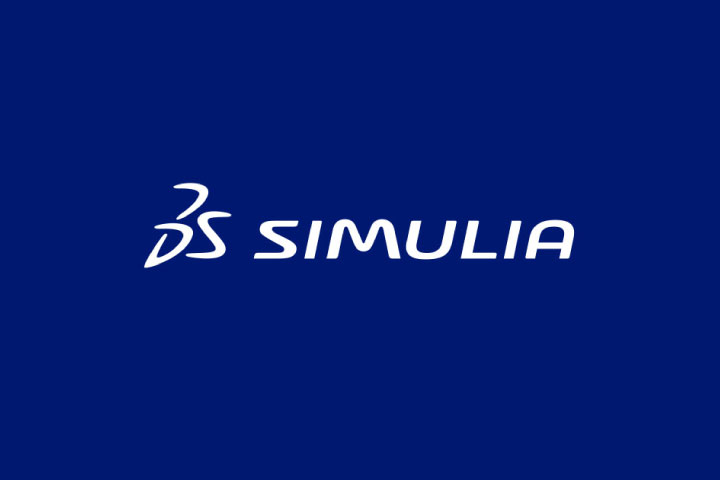
Dassault Systèmes SIMULIA is a suite of advanced simulation tools that offer finite element analysis (FEA), computational fluid dynamics (CFD), and multiphysics simulation capabilities. SIMULIA is designed to help engineers and researchers model the behavior of complex systems and materials in real-world environments, making it a vital tool for industries such as defense, aerospace, automotive, energy, and life sciences.
SIMULIA enables defense organizations and government agencies to simulate critical systems like military vehicles, weapons systems, aerospace components, and structural integrity under a wide range of conditions, including impact analysis, fluid dynamics, and thermal effects. By using advanced simulation technologies, SIMULIA helps reduce the need for physical prototypes, speeds up the product development cycle, and ensures that complex systems meet stringent safety and performance standards.
Key Features:
-
Finite Element Analysis (FEA): SIMULIA provides powerful finite element analysis tools that allow users to model and simulate the structural behavior of complex systems under stress, strain, and deformation. This is particularly useful for evaluating military vehicles, aerospace components, and infrastructure integrity in defense and homeland security applications.
-
Computational Fluid Dynamics (CFD): The CFD capabilities of SIMULIA allow for precise simulations of fluid flows, including aerodynamics, turbulence, and thermal effects. This is essential for designing systems such as aircraft, submarines, and unmanned vehicles, ensuring optimal performance in high-pressure environments.
-
Multiphysics Simulation: SIMULIA integrates multiple simulation disciplines, allowing for multiphysics simulations that consider the interaction between structural, fluid, thermal, and electromagnetic phenomena. This provides a comprehensive understanding of system behavior, ensuring robust performance in real-world environments.
-
Crash and Impact Simulation: Defense organizations can use SIMULIA to model impact analysis and simulate ballistic tests for military vehicles, armored structures, and personnel protection systems. This helps ensure the safety and resilience of equipment under extreme conditions.
-
Durability and Fatigue Testing: SIMULIA includes tools for durability and fatigue analysis, allowing defense contractors to evaluate the long-term performance of materials and components under repeated stress and load. This is crucial for systems that must withstand harsh operational environments over extended periods.
-
Electromagnetic Simulation (EM): SIMULIA provides electromagnetic simulation tools that enable the analysis of electromagnetic fields in radar systems, communication devices, and electronic warfare equipment. This helps engineers ensure that these devices perform effectively in complex defense applications.
-
Thermal and Fluid-Structure Interaction (FSI): SIMULIA supports thermal analysis and fluid-structure interaction, which are critical for designing aerospace components, naval systems, and power generation equipment. This ensures that defense systems can withstand extreme temperature variations and high-stress fluid environments.
-
High-Performance Computing (HPC): SIMULIA leverages high-performance computing capabilities, allowing defense organizations to run large-scale simulations efficiently. This is particularly useful for modeling the behavior of complex systems in real-time, ensuring quick turnaround times for mission-critical projects.
Applications:
-
Military Vehicle Design and Testing: SIMULIA is widely used to simulate the behavior of military vehicles, such as tanks and armored personnel carriers, under various operational conditions. Engineers can assess the structural integrity, armor resilience, and impact resistance of these vehicles using FEA and impact simulation tools.
-
Aerospace and Defense Components: For the aerospace sector, SIMULIA provides tools to model and test components such as aircraft wings, jet engines, and communication systems. CFD simulations help optimize aerodynamic performance, while thermal analysis ensures that components can withstand extreme temperatures at high altitudes.
-
Weapon System Simulation: SIMULIA supports the development and testing of weapon systems, including missile systems, ballistic equipment, and explosives. Multiphysics simulations allow for accurate modeling of fluid dynamics, impact resistance, and heat transfer in these systems, ensuring optimal performance in combat.
-
Electromagnetic Defense Systems: The electromagnetic simulation capabilities of SIMULIA are ideal for designing and testing radar systems, electronic warfare equipment, and military communication devices. Engineers can model how electromagnetic fields interact with various materials and systems, ensuring that these devices meet performance requirements.
-
Structural Integrity of Defense Infrastructure: SIMULIA’s FEA tools can be used to simulate the structural integrity of military bases, naval ports, runways, and other critical defense infrastructure. By modeling the impact of environmental factors, stress, and load, defense organizations can ensure that infrastructure remains operational in the face of natural disasters or attacks.
-
Survivability and Protection Systems: Defense contractors use SIMULIA to design protective systems for military personnel, vehicles, and infrastructure. Crash and impact simulations help evaluate the effectiveness of armor plating, shields, and other protective systems under various stress conditions.
Benefits:
-
Reduced Need for Physical Prototyping: By simulating the behavior of complex systems virtually, SIMULIA reduces the need for expensive physical prototypes and field testing. This leads to significant cost savings and accelerates the development timeline for defense and aerospace projects.
-
Enhanced Product Reliability: SIMULIA’s advanced simulation tools allow defense organizations to model real-world conditions with a high degree of accuracy, ensuring that products are reliable and durable in the field. This improves mission success rates and reduces maintenance costs for critical defense systems.
-
Comprehensive Multiphysics Analysis: The ability to simulate multiple physical phenomena simultaneously gives defense engineers a complete understanding of how their systems will perform in real-world environments. This is particularly important for defense applications where fluid, thermal, electromagnetic, and structural forces interact.
-
Compliance with Safety Standards: SIMULIA helps ensure that defense systems comply with safety and regulatory standards by providing accurate simulations of their behavior under extreme conditions. This is critical for systems that must pass military certifications and safety reviews.
-
Scalability for Large-Scale Projects: With its high-performance computing capabilities, SIMULIA can handle large-scale defense projects involving complex simulations and large datasets. This makes it suitable for aerospace manufacturers, military contractors, and government agencies working on extensive defense projects.
-
Optimized Designs for Defense Applications: SIMULIA’s optimization algorithms allow engineers to fine-tune their designs for maximum performance, weight reduction, and cost efficiency. This ensures that defense equipment is both high-performing and cost-effective, critical for large-scale military contracts.
-
Improved Decision-Making with Data-Driven Insights: The detailed simulation data generated by SIMULIA helps defense and aerospace organizations make data-driven decisions, improving product development and strategic planning.
Dassault Systèmes SIMULIA is a versatile SaaS platform designed for the simulation and analysis of complex systems in the defense, aerospace, and manufacturing sectors. Its ability to handle finite element analysis, computational fluid dynamics, and multiphysics simulations makes it ideal for modeling military vehicles, weapons systems, and defense infrastructure. SIMULIA's high-performance computing capabilities and precise simulation tools help defense organizations improve product reliability, reduce costs, and ensure that systems meet stringent safety and performance standards.
Similar Products

Lockheed Martin Prepar3D
Lockheed Martin Prepar3D (P3D) is a professional-grade simulation software widely used for training…

SimScale
SimScale is a cloud-based engineering simulation platform that provides computational fluid dynamic…

IFS Applications
IFS Applications is an integrated enterprise resource planning (ERP) software suite designed for as…

OneTrust
OneTrust is a leading privacy, security, and governance platform that helps organizations manage an…

Deltek Costpoint
Deltek Costpoint is a comprehensive ERP (Enterprise Resource Planning) solution specifically design…